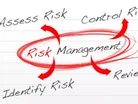DHL launches Resilience360: risk management solutions to improve logistics

Written by Alyssa Clark
DHL - the world’s leading logistics company – today announced the launch of DHL Resilience360. It is a unique new risk management solution which will enable businesses to turn supply chain disruption and global environmental and socio-political volatility into competitive advantage by providing them with a holistic, end-to-end view of their supply chains and real-time risk visibility.
With the support of DHL Resilience360, customers can avoid production stop and lost sales by redirecting resources and adopting alternative strategies when a disruption occurs; considerably supporting their financial stability and potentially capturing sales and market share from their competitors.
The launch comes as findings in ‘The Resilient Supply Chain,’ a new report by Lisa Harrington, President of the lharrington group LLC, reveal that companies risk critical damage to their businesses if they don’t build resiliency – rather than just risk management – into their supply chains to address and respond to the driving trends shaping international commerce.
Bill Meahl, DHL’s Chief Commercial Officer, says, “We understand that supply chains are the lifeblood of our customers’ businesses and create solutions like DHL Resilience360 to help them meet today's challenges and anticipate tomorrow’s. You can’t eliminate risks or prevent them from happening, but you can manage them to help minimize the negative impact on your business. With the right tools, you can even capitalize on disruptions and disasters by having the correct measures in place to respond quickly and effectively when competitors can’t.”
The four trends – consumerism and boundary bleed; an increasingly fast, increasingly interconnect global marketplace; emerging markets; and the rise of regionalism – mean that volatility has emerged as a systemic condition rather than a discrete event at a fixed period and point in time. This exposes just in time (JIT), lean and other formerly acknowledged ‘best practice’ supply chain models, prized for their efficiency, as now too brittle and high risk. It proposes a new ‘fast, lean and resilient’ hybrid supply chain that evolves beyond sequential identification and management of operational risks to account for systemic risk.
The white paper includes the inaugural ‘Resilience Index’ which indexes five industry sectors – Technology, Automotive, Consumer Goods and Retail, Life Sciences and Healthcare, and Engineering and Industrial – and ranks them in order of resilience maturity. The index reveals that the Technology and Automotive sectors are operating the most mature and therefore profitable supply chains, followed by the Consumer Goods and Retail Sector, while the Life Sciences and Healthcare, and Engineering and Manufacturing sectors are currently lagging behind in their ability to build, operate and sustain a resilient supply chain.
Lisa Harrington, President, lharrington group LLC, said, “Tellingly, no companies in any sector have reached Stage 4 maturity in the four stage resilience maturity model. And companies which continue to ignore or lag behind in addressing supply chain unpredictability and vulnerability do so at critical risk to their bottom lines, and shareholder or customer confidence.
“Companies should build cost-effective flexibility and contingency into their logistics so that they can respond, redirect resources and adopt alternative strategies when a disruption occurs, and ideally capture sales and market share from competitor companies suffering the same disruptions. The most successful companies operate an interconnected web of trading partners which embraces the four pillars of supply chain resilience: visibility, flexibility, collaboration and control.”
DHL Resilience360 will allow customers to assess critical hot spots in their supply chains, visualize them and build a risk profile for initiating potential mitigation activities. The tool links information on natural disasters, theft, geopolitical and other risks with a customer’s global manufacturing and distribution footprint, and is established on the basis of the four critical aspects of supply chain risk – operations, hazards, socio-political and natural disaster risks. Having mapped the entire supply chain of a customer, the tool provides real-time visibility of risks by working collaboratively with partners to provide options for immediate recovery.
Download and view the full report at http://supplychain.dhl.com/Resilience-360. For more information about supply chain best practice, solutions and success stories, visit the DHL Supply Chain pages at www.dhl.com/supplychain.



